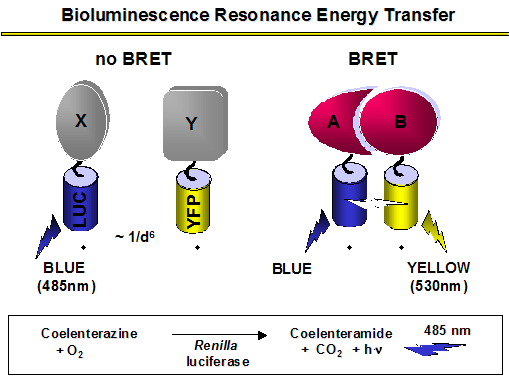What is BRET?
BRET stands for Bioluminescence Resonance Energy Transfer. It is a form of radiation-free energy transfer that can occur when two compatible optical probes, an energy donor and an energy acceptor, are brought into molecular proximity (Figure). By genetically tagging two candidate interaction partners A and B with the BRET energy donor (a luciferase) and an energy acceptor (a fluorescent protein) BRET serves as a sensor to detect interactions between pairs of cellular proteins.

Figure: We are using the original BRET system described by the Johnson lab
(Xu et al., 1999; PNAS 96:151-156), in which the blue light emitting Renilla luciferase
(RLUC) is paired with Yellow fluorescent protein (YFP).

